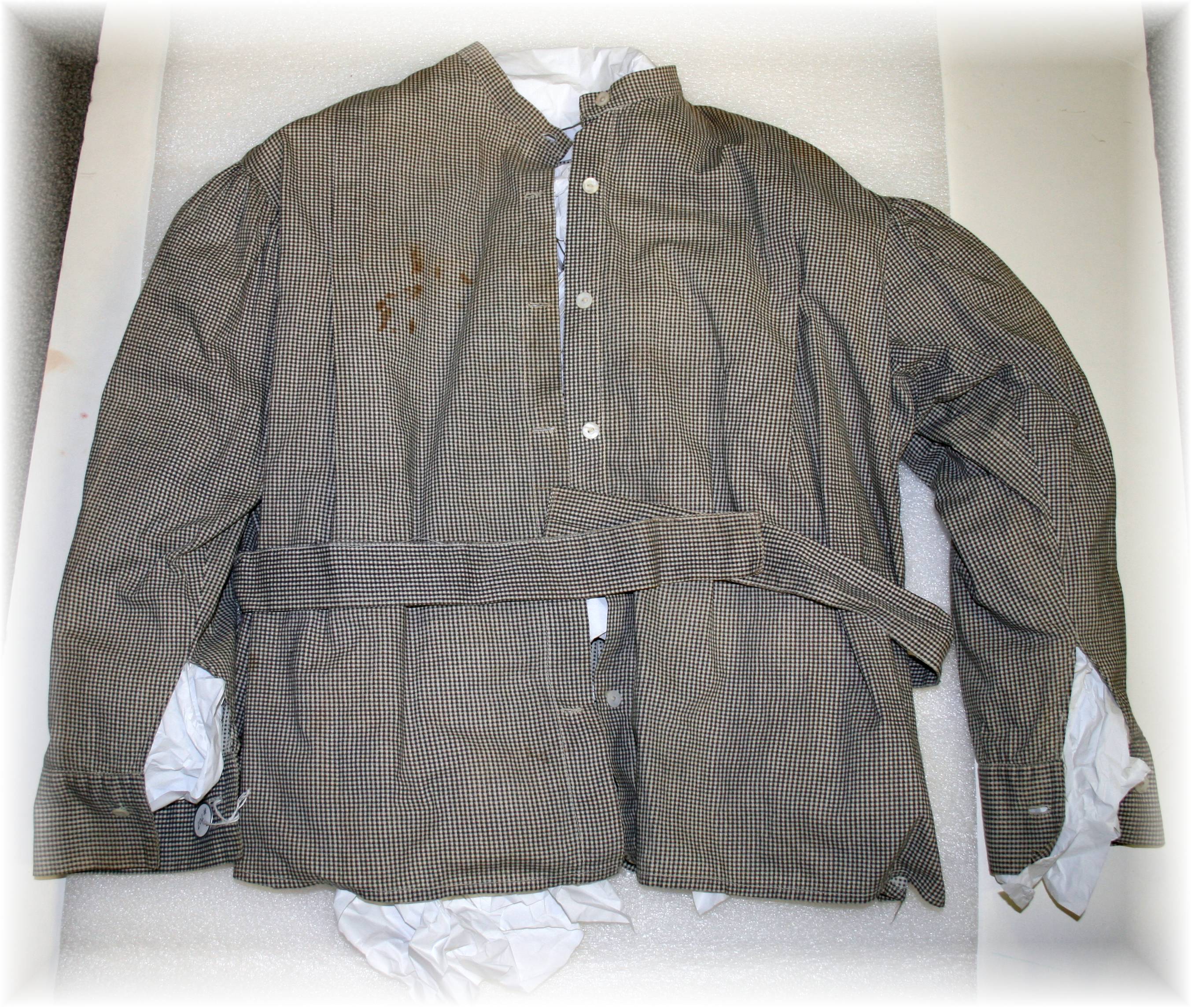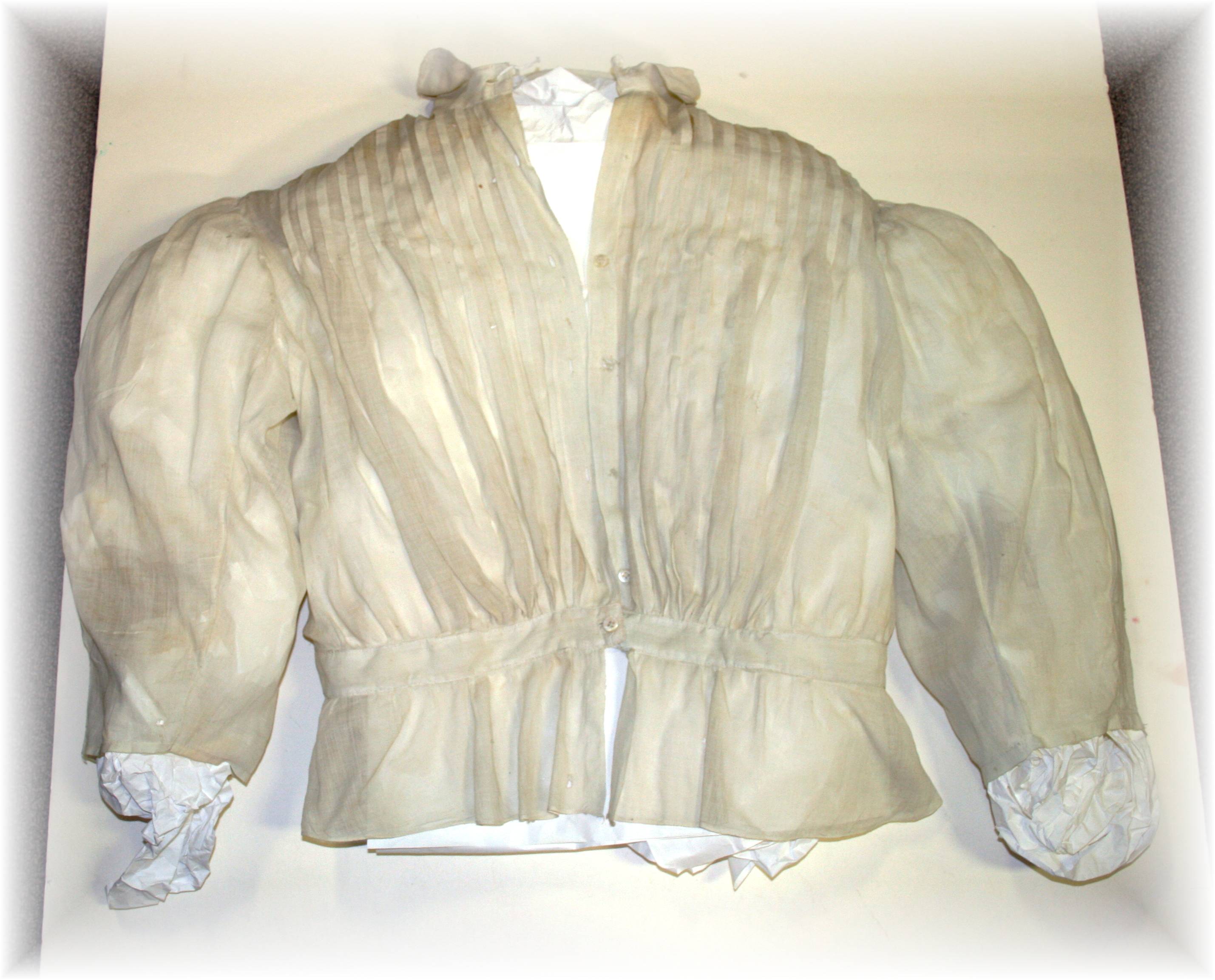
JEFF-706 and 707
Fashion has always been a powerful component of American society and women’s clothing has demonstrated a wide variety of style. New style fashions generally took shape quite steadily, reaching an extreme form and then reverting more rapidly, giving way to a new emphasis, and the beginning of another fashion from century to century. Womens fashions from the Edwardian era (1901-1912) are reflected in two examples of women’s daywear shirtwaists from our clothing collections.
The first example is a long-sleeved gingham cotton shirtwaist (JEFF 706) with a small black and white check pattern. There is one large pleat on either side-straight at the shoulder. The shirtwaist is gathered at the back onto a band to which two ties are attached. These are made to fasten at the front. The shirtwaist has a small standup collar and six buttons of mother-of-pearl. Each cuff has two mother-of pearl buttons. As women began participating in athletics, casual and comfortable “sport clothing” also became popular. The style of the blouse seems to indicate it might have been worn as part of a riding outfit or some outdoor activity. The sleeves are not the large puffed sleeves from a previous era, but there is another seam sewn into the underpart of the sleeve creating more room to move the arms. The garment seems to have been both hand sewn and machine sewn. The material is unique in that it is a reverse print on the other side. There is no specific date given to this garment.

The second example is a shirtwaist (JEFF 707) made of a fine gauze material. It is pleated at the front onto a waistband onto which a peplum is gathered. The shirtwaist has a small rounded collar and seven buttonholes. Only four mother-of-pearl buttons remain. It has a downward movement in appearance with multiple, elaborate pleated folds on the bodice front and slightly billowy sleeve. There is some thought that this blouse might have been worn underneath the first example. However, from the style and the make, it appears a little older than the first example. We have no specific date for this garment. It is likely that both of these garments could have been made by immigrant women working at home or in a sweat shop. High society gowns and
other garments were produced by impoverished Edwardian clothing makers in sweat shop who labored under poor conditions and often worked 14 hour days for wages that barely fed and clothed them. The dressmaker is a significant representation of the Edwardian poor whose sweat and labor was essential to maintain the image presented by high society.
The style of women’s clothing changed because of many factors-buying power of the growing nouveaux riche grew; a greater diffusion of information on fashion due to improved communications; and major technical developments in clothing production-(ie.-the invention of the sewing machine, an increase in paper patterns, new dyes to use on clothes, and new materials (i.e. the first synthetic silk was introduced in 1892).) Fashion in the Edwardian age continued the
long elegant lines of the 1890’s with more of a new, columnar silhouette look for women that
signaled the approaching abandonment of the corset as an indispensable garment of fashionable women. Because of the many new freedoms women began to experience in the 1890’s, their daywear clothing became more comfortable and relaxed. The shirtwaist allowed women to play sports and look presentable in mixed company. With the invention of the safety bicycle in the 1890’s, more women needed more informal wear that allowed greater freedom of movement but was modest at the same time participate in sporting activities.
Garments reflect the taste of the person wearing them. Despite their yellowed and worn look,
these shirtwaists carry their own fascinating history of the lives of the women who wore them.
